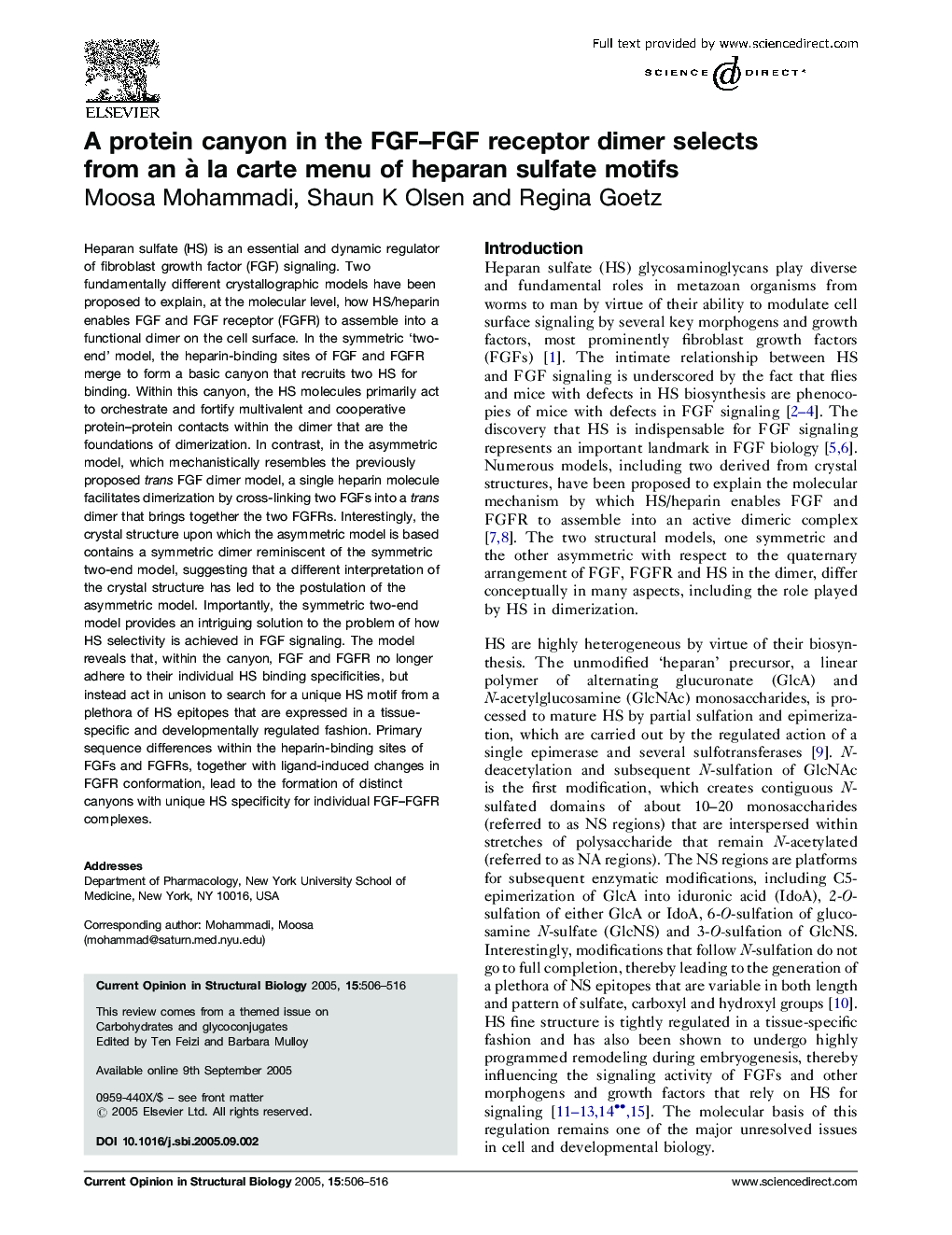| Article ID | Journal | Published Year | Pages | File Type |
|---|---|---|---|---|
| 10822746 | Current Opinion in Structural Biology | 2005 | 11 Pages |
Abstract
Heparan sulfate (HS) is an essential and dynamic regulator of fibroblast growth factor (FGF) signaling. Two fundamentally different crystallographic models have been proposed to explain, at the molecular level, how HS/heparin enables FGF and FGF receptor (FGFR) to assemble into a functional dimer on the cell surface. In the symmetric 'two-end' model, the heparin-binding sites of FGF and FGFR merge to form a basic canyon that recruits two HS for binding. Within this canyon, the HS molecules primarily act to orchestrate and fortify multivalent and cooperative protein-protein contacts within the dimer that are the foundations of dimerization. In contrast, in the asymmetric model, which mechanistically resembles the previously proposed trans FGF dimer model, a single heparin molecule facilitates dimerization by cross-linking two FGFs into a trans dimer that brings together the two FGFRs. Interestingly, the crystal structure upon which the asymmetric model is based contains a symmetric dimer reminiscent of the symmetric two-end model, suggesting that a different interpretation of the crystal structure has led to the postulation of the asymmetric model. Importantly, the symmetric two-end model provides an intriguing solution to the problem of how HS selectivity is achieved in FGF signaling. The model reveals that, within the canyon, FGF and FGFR no longer adhere to their individual HS binding specificities, but instead act in unison to search for a unique HS motif from a plethora of HS epitopes that are expressed in a tissue-specific and developmentally regulated fashion. Primary sequence differences within the heparin-binding sites of FGFs and FGFRs, together with ligand-induced changes in FGFR conformation, lead to the formation of distinct canyons with unique HS specificity for individual FGF-FGFR complexes.
Related Topics
Life Sciences
Biochemistry, Genetics and Molecular Biology
Biochemistry
Authors
Moosa Mohammadi, Shaun K Olsen, Regina Goetz,
